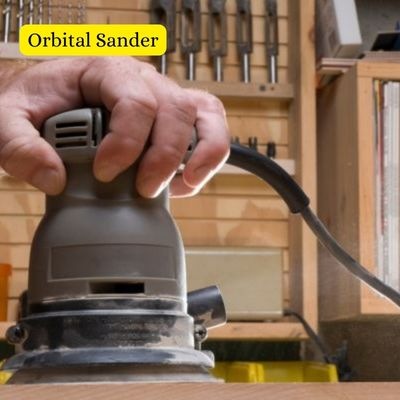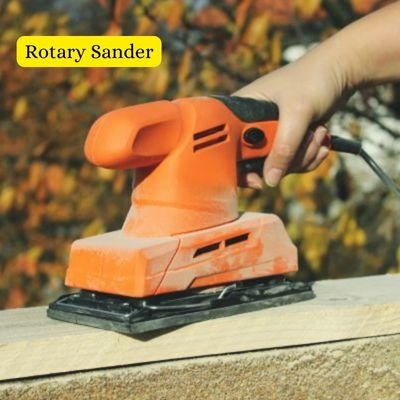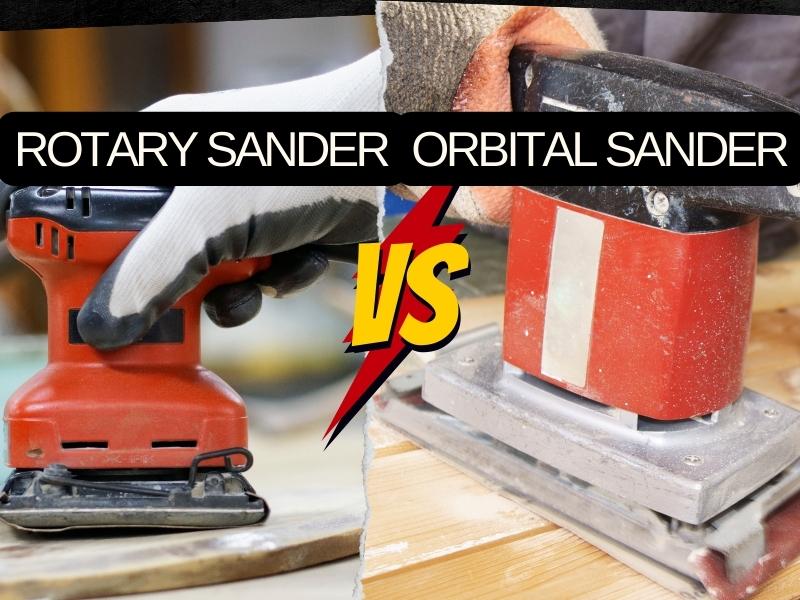If you are in the market for a new sander, you might be wondering about the differences between rotary and orbital sanders. Both types of sanders have their own distinct advantages, so it’s important to choose the right one for your needs. Here’s a quick rundown of the differences between rotary sander vs orbital sanders to help you make an informed decision. We will discuss the differences between rotary sanders and orbital sanders, as well as which one is best for certain applications. We will also provide some tips on how to use each type of sander. So whether you are a beginner or an experienced woodworker, read on to learn more about rotary sanders vs orbital sanders.
Orbital Sander:

An orbital sander is a hand-held power tool that uses sandpaper discs to smooth and level surfaces. It is also known as a palm sander or finishing sander. Orbital sanders are used for a variety of tasks, including paint and finish work, woodworking, and auto body work.
Orbital sanders have a square or rectangular pad that oscillates or orbits as it sands. The motion of the pad combined with the abrasiveness of the sandpaper removes material from the surface being sanded. Most orbital sanders have dust-collection features to help keep your work area clean.
If you are doing a project that requires a lot of sanding, an orbital sander can save you a lot of time and effort. With its rapid removal of material and ability to produce a smooth finish, an orbital sander is an essential tool for any woodworker or do-it-yourselfer.
Orbital sanders are available in both electric and pneumatic (air-powered) models.
- Pneumatic orbital sanders are typically more powerful than electric models and can be used for heavy-duty applications, such as removing paint or rust from metal surfaces.
- Electric orbital sanders are less expensive and easier to maintain than pneumatic models, making them a good choice for occasional use or light-duty applications.
There are a few things to keep in mind when using an orbital sander:
- Be sure to use the correct sandpaper for your application. Coarse sandpaper is used for aggressive material removal, while fine sandpaper is best for finishing work.
- Avoid using too much pressure when sanding, as this can damage the surface being worked on.
- Always use a dust mask when using an orbital sander to avoid inhaling any harmful particles.
Benefits of Orbital Sanders over Rotary Sanders:
- Orbital sanders are able to reach tight spaces and corners that rotary sanders cannot.
- Orbital sanders are lighter weight and therefore easier to maneuver than rotary sanders.
- Another advantage of orbital sanders is that they are relatively quiet compared to rotary sanders.
Rotary Sander:

A rotary sander is a power tool that uses abrasive paper discs to smooth wood, metal or plastic surfaces. It is also known as a finishing sander or palm sander. Rotary sanders are handheld power tools that consist of a circular pad that spins at high speeds. The pad is attached to a handle and the whole device is powered by an motor.
The operator holds the sander against the surface to be sanded and moves it in a circular motion. The size and speed of the pad will depend on the type of surface being sanded.
Rotary sanders are relatively easy to use and can save a lot of time compared to hand-sanding. But, they can also cause damage to surfaces if not used properly.
It is important to keep the following in mind when using a rotary sander:
- Always wear safety goggles or glasses when using the tool.
- Do not apply too much pressure when sanding, as this can damage the surface.
- Be sure to keep the sander moving at all times to avoid creating deep scratches.
- Use a dust mask to avoid inhaling any particles created by sanding.
Benefits of Rotary Sander over Orbital Sanders:
- Rotary sanders can be used with a much wider variety of sanding discs. This means that you can use a rotary sander for more than just one type of project.
- Rotary sanders are usually much more powerful than orbital sanders. So that they can remove more material in a shorter amount of time.
- Rotary sanders tend to leave a much smoother finish than orbital sanders. This is because the rotary motion of the sander evenly sands the surface, while an orbital sander can create swirl marks.
Difference between Rotary Sanders and Orbital Sanders:
So, what’s the difference between these two types of sanders? There are several key differences between rotary sanders vs orbital sanders. A rotary sander spins in a circle, while an orbital sander moves in small circles. That means that a rotary sander can cover more area more quickly, but an orbital sander is better at getting into tight spaces. Additionally, orbital sanders are usually less aggressive than rotary sanders, making them better suited for delicate tasks. Rotary sanders typically have a higher speed than orbital sanders, making them better for larger projects.
Rotary Sander VS Orbital sander: Which one is better for you?
If you are wondering whether a rotary sander or an orbital sander is better for you, the answer depends on what type of sanding project you are undertaking. If you are working on something large and flat, like a table top, then a rotary sander will be more effective. But if you are working on something with lots of nooks and crannies, like a piece of furniture with lots of detail, then an orbital sander will be better.
So, which one should you choose, Rotary Sander VS Orbital Sander? When choosing between a rotary sander and an orbital sander, it is important to consider the task at hand. For large projects or tasks that require a lot of aggression, a rotary sander is the better choice. But, for delicate tasks or projects where a smooth finish is desired, an orbital sander is the better option. Ultimately, the decision between a rotary sander and an orbital sander comes down to personal preference and the specific project requirements.
Just make sure to follow all the safety instructions and take your time. Sanding can be a dusty and dirty job, but it’s also very satisfying to see the transformation of a piece of furniture from rough to smooth. So go ahead and get started on your next sanding project.
Have you ever used a rotary or orbital sander? What are your thoughts on these two types of sanders? Let us know in the comments below.
